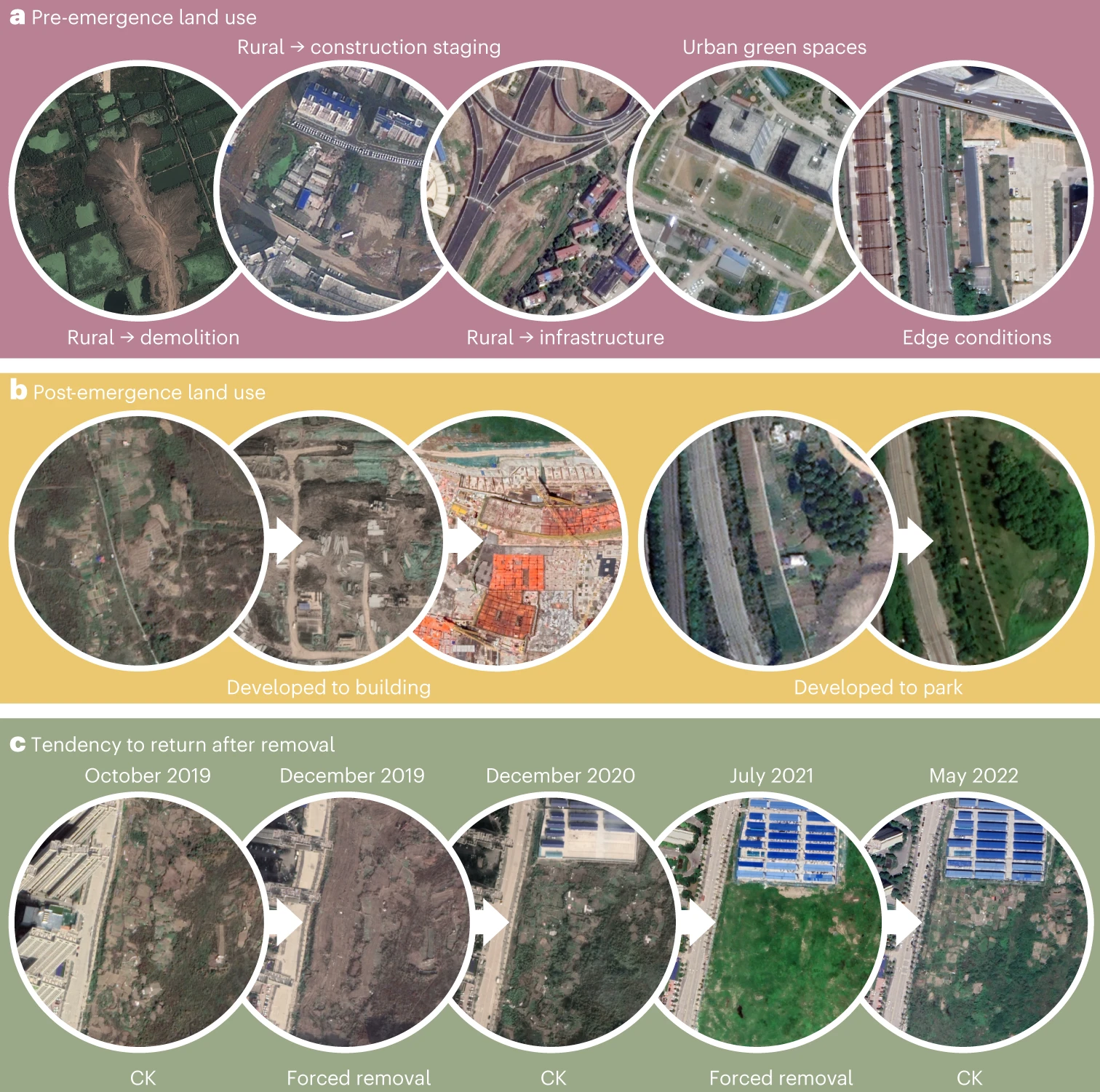Exploring how informal ruralization contributes to China's fast urbanization.
The abstract discusses the informal ruralization phenomenon known as chengshi kaihuang (CK) in China, where citizens cultivate vegetables in neglected urban spaces in rapidly urbanizing cities. It highlights the transformation of China from an agrarian society to a nation of megacities, emphasizing the incorporation of rural elements in urban development. The paper challenges the perception of rural areas as residual against urbanization, proposing CK as a bottom-up ruralizing force within rapid urbanization. It presents a remote sensing study of CK in Wuhan, a Chinese megacity, to analyze its spatial impact on central urban districts.
The text delves into the historical context of China's urbanization process, critiquing binary rural-urban distinctions and emphasizing the need to recognize rural dynamics within expanded urban spaces. It references previous works on hybrid rural-urban phenomena in Southeast Asia and advocates for a nuanced understanding of ruralization beyond traditional frameworks. The study focuses on CK, an informal practice symbolizing resilience and self-sufficiency historically in China. The emergence of CK in neglected urban areas is seen as a response to rapid urbanization and inefficiencies in urban development processes. The paper aims to shed light on the macro-scale impact of CK on urban environments.
The research employs remote sensing and social media data to study CK practices in Wuhan. It identifies CK sites by their distinct physical characteristics, such as small, irregular agricultural plots in urban settings. The paper discusses the locations and distribution of CK sites, highlighting their emergence from demolished rural land and neglected urban spaces. It examines the spatiotemporal characteristics of CK, its interactions with the city, and the motivations of practitioners through social media analysis.
The study uses supervised machine-learning land cover classification to analyze CK sites in Wuhan. By training classifiers with limited sample data, the research identifies and maps CK sites across the city. The results show the extent of CK activity in Wuhan's central urban districts between 2017 and 2022, emphasizing the practice's significant spatial impact. The paper discusses the post-emergence land-use patterns of CK sites, including redevelopment, forced removal, and return of CK practices. It also delves into the social, political, and cultural discourses surrounding CK, highlighting practitioners' motivations and references to national narratives.
Overall, the text provides a comprehensive analysis of the informal ruralization phenomenon in China, focusing on CK's role in reshaping urban spaces. It challenges conventional notions of urban-rural dynamics and emphasizes the agency of ordinary people in responding to rapid urbanization. By leveraging remote sensing and social media data, the study offers insights into the spatial, temporal, and socio-political aspects of CK practices in Chinese megacities, contributing to a nuanced understanding of rural-urban interactions in contemporary urban environments.
Source: https://www.nature.com/articles/s44284-024-00038-4
The text delves into the historical context of China's urbanization process, critiquing binary rural-urban distinctions and emphasizing the need to recognize rural dynamics within expanded urban spaces. It references previous works on hybrid rural-urban phenomena in Southeast Asia and advocates for a nuanced understanding of ruralization beyond traditional frameworks. The study focuses on CK, an informal practice symbolizing resilience and self-sufficiency historically in China. The emergence of CK in neglected urban areas is seen as a response to rapid urbanization and inefficiencies in urban development processes. The paper aims to shed light on the macro-scale impact of CK on urban environments.
The research employs remote sensing and social media data to study CK practices in Wuhan. It identifies CK sites by their distinct physical characteristics, such as small, irregular agricultural plots in urban settings. The paper discusses the locations and distribution of CK sites, highlighting their emergence from demolished rural land and neglected urban spaces. It examines the spatiotemporal characteristics of CK, its interactions with the city, and the motivations of practitioners through social media analysis.
The study uses supervised machine-learning land cover classification to analyze CK sites in Wuhan. By training classifiers with limited sample data, the research identifies and maps CK sites across the city. The results show the extent of CK activity in Wuhan's central urban districts between 2017 and 2022, emphasizing the practice's significant spatial impact. The paper discusses the post-emergence land-use patterns of CK sites, including redevelopment, forced removal, and return of CK practices. It also delves into the social, political, and cultural discourses surrounding CK, highlighting practitioners' motivations and references to national narratives.
Overall, the text provides a comprehensive analysis of the informal ruralization phenomenon in China, focusing on CK's role in reshaping urban spaces. It challenges conventional notions of urban-rural dynamics and emphasizes the agency of ordinary people in responding to rapid urbanization. By leveraging remote sensing and social media data, the study offers insights into the spatial, temporal, and socio-political aspects of CK practices in Chinese megacities, contributing to a nuanced understanding of rural-urban interactions in contemporary urban environments.
Source: https://www.nature.com/articles/s44284-024-00038-4


Comments
Post a Comment